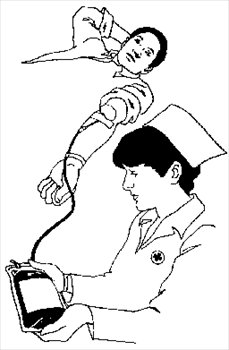Patricia Bath

Daughter of Rupert Bath and Gladys Bath, their encouragment allowed Patricia to focus on education to achieve her dreams, which brought about her invention against blidness, the "Cataract Laserphaco Probe."
Background:
Excelling at school, she grew fond of the science field, where she became editor of her high schools science paper (winning numerous science awards on the way). In 1960, one of her mentors, Dr. Robert Bernard, added her findings in one of his presentations at an international conference in Washington D.C,winning her a Merit Award from Moademoiselle magazine.
Completing highschool in only 2 and a half years, she then entered NY's Hunter College, studying
Physics, and Chemistry; Earning a B.A in 1964.From there, Bath went to medical school at Howard University, and after finishing her M.D (in 1968), returned to New York as an intern at Harlem Hospitial.
Physics, and Chemistry; Earning a B.A in 1964.From there, Bath went to medical school at Howard University, and after finishing her M.D (in 1968), returned to New York as an intern at Harlem Hospitial.
From here she started to notice the differences in the visually impaired ratio in white and black patients, and found that the difference was because of the lack of access to Ophthalmic care in the black communities.
Invention:
Cataract Laserphaco Probe- Baths dedication to treating and preventing blindness led her to the development of the Cataract Laserphaco Probe. Patented in 1988, the Probe used the power of a laser to painlessly and effeciently vaporize the cataracts from patients eyes (which replaced the more common method of using a drill like device to remove the cataracts from ones eye.)
Another invention of Bath's, allowed the restored sight to many people who've been blind for over 30 years. Baths patents are also held in Japan, Europe, as well Canada.

*Quick Note- Patricia Bath is the President and founder of the American Institute for the Prevention of Blindess.
Legacy: Restoring the eyesight of many, Patricia Bath continued to do great things. Which didn't go unnoticed allowing her to win many awards, as well as being the "First Woman" on the faculty of the UCLA Jules Stein Eye Institue. Still living strong today, she continues to be shining light to all of those who hope to see one day.
Cataract Laserphaco Probe- Baths dedication to treating and preventing blindness led her to the development of the Cataract Laserphaco Probe. Patented in 1988, the Probe used the power of a laser to painlessly and effeciently vaporize the cataracts from patients eyes (which replaced the more common method of using a drill like device to remove the cataracts from ones eye.)
Another invention of Bath's, allowed the restored sight to many people who've been blind for over 30 years. Baths patents are also held in Japan, Europe, as well Canada.

*Quick Note- Patricia Bath is the President and founder of the American Institute for the Prevention of Blindess.
Legacy: Restoring the eyesight of many, Patricia Bath continued to do great things. Which didn't go unnoticed allowing her to win many awards, as well as being the "First Woman" on the faculty of the UCLA Jules Stein Eye Institue. Still living strong today, she continues to be shining light to all of those who hope to see one day.
Resources:
MIT inventor of the week: http://web.mit.edu/invent/iow/bath.html
http://inventors.about.com/od/bstartinventors/a/Patricia_Bath.htm
http://www.african-americaninventors.org/inventors.php?id=2
Picture of Patricia Bath, property of:
http://inventors.about.com/od/bstartinventors/a/Patricia_Bath.htm
Cataract Laserphaco Probe from: http://www.laserfest.org/lasers/pioneers/bath.cfm
laser pic: Foto search Stock IllustrationRF Royalty Free







